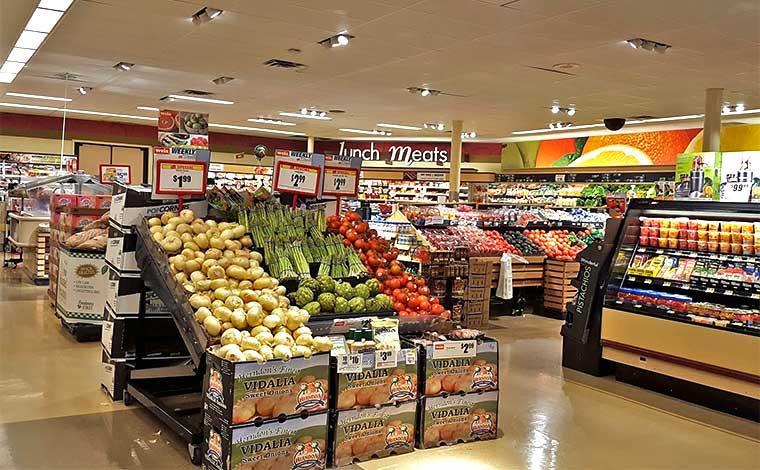Introduction: Understanding Weis Markets
Weis Markets was established in 1912, the American supermarket change has made into a major player in grocery retailing. Today, there are over 200 stores under Weis Markets in different states around America with a rich history built on the service and commitment to the community. This blog post will talk about the history of the chain. The products that it offers, the changes it has made in local communities and recently how it changes the future of the chain.

1. The Birth of Weis Markets: A Historical Overview
- Founding and Early Years: Weis Markets first came into existence in Sunbury, Pennsylvania, courtesy of the two brothers-Harry Weis and Sigmund Weis. In the early 1900s, they realized that there was a large audience to carry along for giving groceries at a better price if they accepted cash only at the point of delivery, which at the time was virtually unheard of. Nobody offered credit to customers; their pricing difference would enable them to sell at a lower amount, and, of course, it provided the cash as profit for the business. It was this model that greatly dazzled the consumer’s shopping experience. The year 1933 saw the Weis brothers operate 115 stores in central Pennsylvania.
- The Shift to Supermarkets: Weis underwent a transformation in response to the changing consumer environment. In the 1940s, Weis underwent a major transformation in retail grocery from corner grocery stores to self-service supermarkets. By the mid-1950s, 35 supermarket operations were already under the control of Weis Markets. At this point, success qualified them for the expansion of branches outside Pennsylvania during the 1960s through the 1970s, which included Maryland, New York, New Jersey, and Delaware. Prudent expansion into those states has firmly established Weis as a major grocery chain in the mid-Atlantic region.
- Growth Through Acquisitions: In the Nineties and the Naught, that was growth by acquisition for Weiss. Some significant acquisitions included the likes of Mr. Z’s and King’s, which expanded their geographic reach. For example, this brand new market they ventured into was that of pet supply stores, acquired through Superset; however, this segment is no longer active. Weis has grown not only by expanding its store numbers but has also built a formidable competitive grocery market presence.
2. Product Offerings and Innovations at Weis Markets
Weis Markets offers a wide range of groceries to meet the needs of its diverse customers. From fresh produce to top-grade deli meats, the company aims at providing quality groceries to households.
- Fresh Produce: Weis takes pride in offering fresh-and-high-quality produce which holds a central part of their product line. The company emphasizes local fruits and vegetables, ensuring that consumers get fresh alternatives which are both appealing and healthy. Weis’ fresh produce section is one of its main attractions for its loyal clientele.
- Meat and Seafood: There is much variety since the Weis Markets offer just-picked meaty fresh. Beyond grass-fed beef, antibiotic-free chicken, and sustainable seafood. Butcher shops also offer custom-cut meats tailored to customer requests. This is how Weis composes its standard with meat and seafood lines.
- Bakery and Deli: Weis Markets’ bakery section sells everything freshly baked: bread, pastries, cake, and much more. The deli section caters to a variety of gourmet meats and cheeses. Meals are also prepped for easy grab-and-go by their in-store chefs for the ever-busy household.
- Pharmacy and Health Services: Weis also provides pharmacy services in many of its stores apart from offering groceries. The pharmacies include prescription medication, over-the-counter health products, and flu shots. The extension of Weis into healthcare shows satisfactorily that it will extend the needs of their customers.
- Private Label Brands: Weis Markets comes with a wide array of private-label brands that usually include categories such as. Weis Quality, Weis Organic, and Weis Signature. These range from canned goods to dairy and are typically sold at competitive prices which allows the consumer to have the best value without sacrificing quality.
3. Weis Markets and Its Community Impact
For the years, community engagement was one of the hallmarks of the mission of Weis Markets. Throughout the years, Weis has made supporting local initiatives and food banks and educational programs. A priority in ensuring that it could give back to the communities that have supported it.
- Supporting Local Charities: Wise has a long association with food banks and charities, through which they provide meals to underserved communities. On some holidays and special days, Wise sends donations to food banks scattered across its operational regions to reduce food insecurity.
- Educational Programs: Weis also invests in education through alliances with schools and organizations that will provide scholarships and educational programs. While continuing their pledge to community development, they imply being an active part of the improvement of quality of life among people in regions where they operate.
- Sustainability Initiatives: Adopted in essence under an effective value, Weis Markets is keeping it moving by several waste reduction strategies, energy conservation programs, and responsible sourcing. No less than establishing energy-efficient stores and systems on packaging, Weis is also promoting an effective healing of the earth while caring for customers.
4. Weis Markets’ Financial Performance and Recent Developments
As of early 2025, Weis Markets continues to show positive financial growth, benefiting from its wide-reaching store base and loyal customer base.
- Financial Performance and Stock Growth: With large increases in its stock price in recent months. It has become an attractive investment bet as a stable-growing grocery retailer owing to its solid business model and continuous investment in its operations.
- Store Closures and Community Reactions: Having experienced success generally, it has been the downsizing of several of its supermarkets all over the states. By this year, 2024, Weis closed down one of its Binghamton stores in the state of New York. The decision had an outcry from customers in the locality who took the store as their merchant for groceries. It proved very easy to observe that going by the trend of profitability in competitive retail markets. There was definitely a trade-off between profitability and customer satisfaction.
5. Weis Markets in the Modern Retail Landscape
Weis Markets is now faced with the new challenge of adopting. A strategy to keep pace with the pace of changing trends of retail. Especially with the intensified growth of consumers shopping online and having goods delivered at home. Weis will encounter opportunities and challenges as a brick-and-mortar store.
- Adapting to Online Shopping: It is a very robust retail site by Weis where home shoppers can place orders for their groceries. The service includes home delivery and curbside pick-up, really gaining momentum in times when everyone felt the affects of COVID-19.
- Expanding the Customer Experience: Weis is also working to improve the in-store consumer experience by adding self-checkout stations, mobile apps, and loyalty programs. The intention here is to enhance customers’ shopping experiences with more choices when they come into a nearby Weis store.
Conclusion: Looking to the Future of Weis Markets
Over the century, Weis Markets has been a story of growth, acquisitions, and a deliberate effort to deliver the highest quality products. The company continues to evolve with the challenges imposed by modern-day retail. While constantly reminding itself that customer satisfaction and community engagement are its pillars. With this motto of sustainability, innovation, and service, Weis Markets truly looks ready to remain a cornerstone of the grocery retail sector in the long term.



